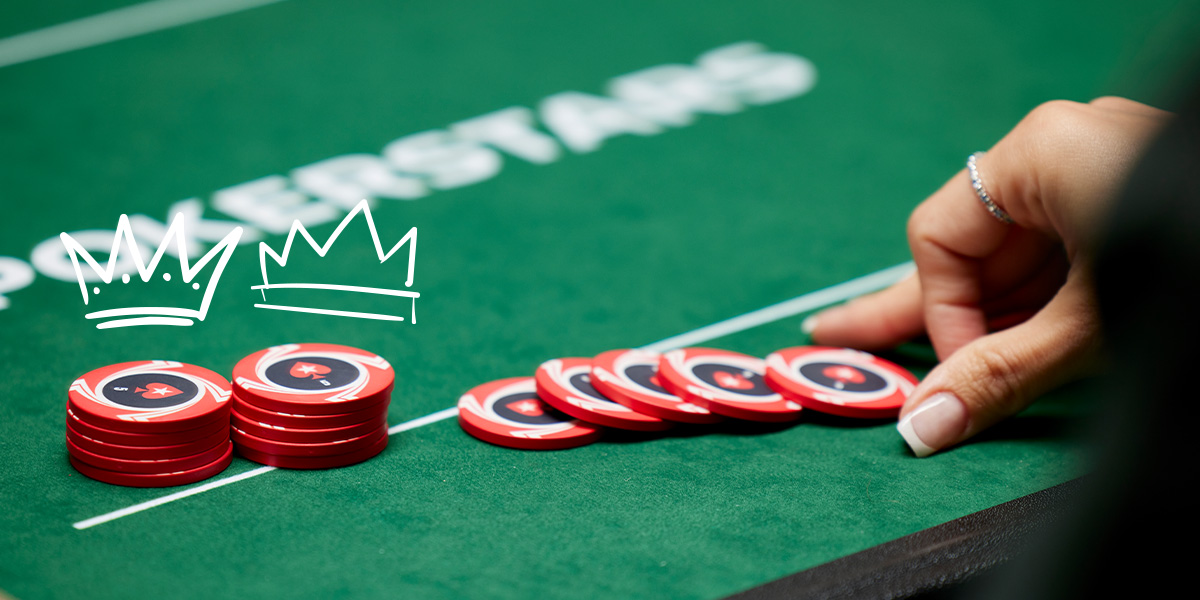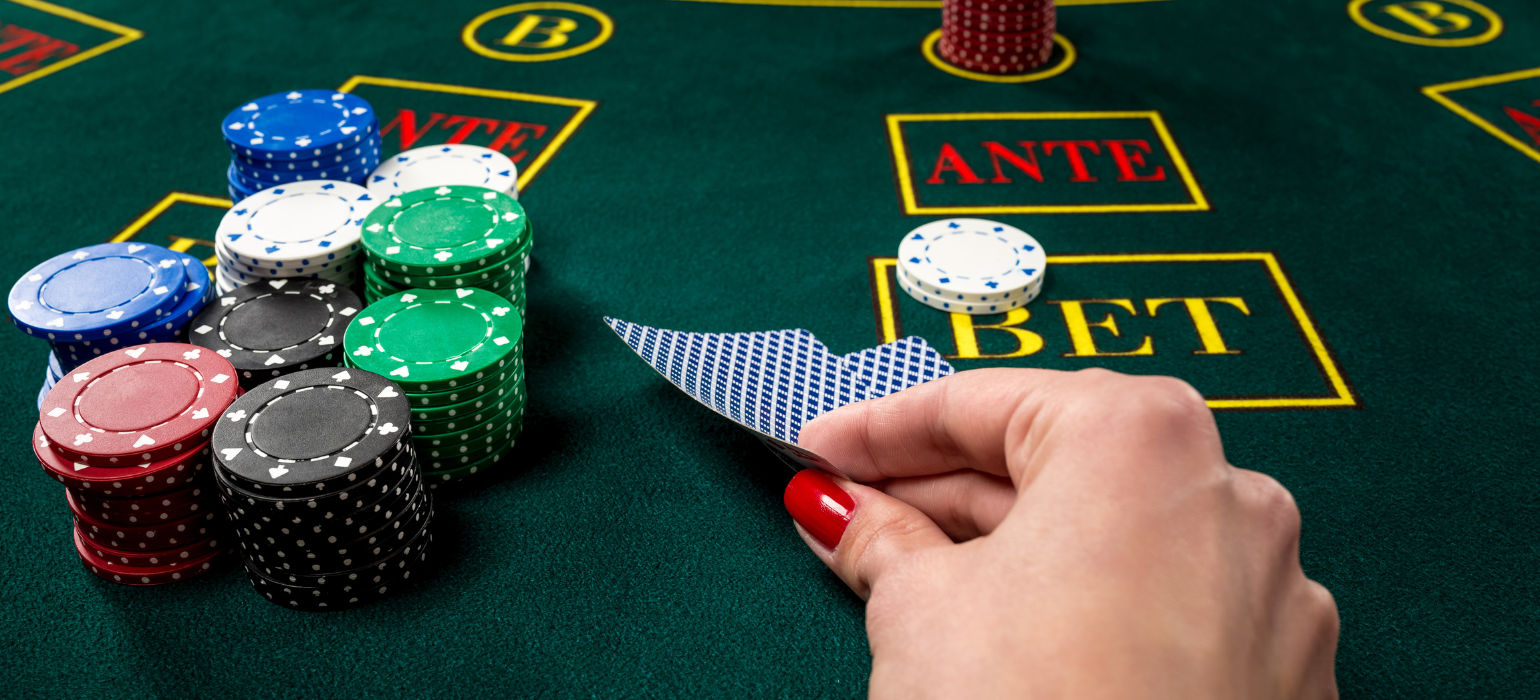Poker is a game of skill, strategy, and psychology. Anyone can learn the basic rules and hand rankings, but mastering the art of betting is what separates the amateurs from the pros. Knowing when and how to bet in poker is crucial in maximizing your profits and minimizing your losses.
In this comprehensive guide, we will delve into the key concepts of betting in poker, including the different options available, the importance of aggression, and how to use your table image to your advantage. So, whether you’re a beginner or an experienced player looking to improve your skills, read on to learn everything you need to know about betting in poker.

Summary of Betting in Poker: Key Concepts

Before we dive into the specifics of betting, let’s take a look at some key concepts that are essential to understanding how betting works in poker.
Communication
Betting is a form of communication in poker. When you place a bet, you are conveying information to your opponents about the strength of your hand. This is why it is crucial to use consistent and decisive actions when betting. Your bets should tell a clear story and leave little room for interpretation.
Building the Pot
The ultimate goal of betting in poker is to build the pot and win it before the showdown. The more money you can get into the pot, the more you stand to win. However, this doesn’t mean you should bet recklessly. It’s essential to understand when to bet and how much to bet.
Exploiting Weaknesses
Betting is also a way to exploit your opponents’ weaknesses. By paying attention to their betting patterns, you can identify when they are weak or strong and capitalize on it. Bluffing is a prime example of exploiting weakness through betting.
Now that we have a basic understanding of the key concepts behind betting in poker let’s explore the different betting options available.
Five Betting Options: Check, Fold, Bet, Call, Raise

In poker, there are five betting options available to players: check, fold, bet, call, and raise. Each option has its own purpose and should be used strategically based on your hand and your opponents’ actions.
Check
A check means that a player is choosing not to bet and passes the action to the next player. This option is only available if no one has placed a bet before you. Checking is often used when a player has a weak hand and wants to see the next card without investing any more money into the pot.
Fold
Folding means that a player is choosing to give up their hand and forfeit any money they have already invested in the pot. This option is used when a player has a hand that is unlikely to improve or beat their opponents’ hands.
Bet
A bet means that a player is placing a wager into the pot. The amount of the bet can vary, but it must be at least the minimum bet amount set for that particular game. Betting is usually done with a strong hand to build the pot and get value from weaker hands.
Call
Calling means that a player is matching the current bet or raise made by their opponent. It is essentially staying in the hand and seeing the next card without raising the stakes. Calling is often used when a player has a decent hand but doesn’t want to risk more money by raising.
Raise
Raising means that a player is increasing the previous bet or raise made by their opponent. A raise must be at least double the previous bet, and players can continue to raise until all players have either called or folded. Raising is a way to put pressure on your opponents and force them to make a decision.
Aggressive vs. Passive: Calls are passive; Raises are aggressive

In poker, there are two main styles of play – aggressive and passive. Aggressive players tend to make more bets and raises, while passive players tend to call or check more often. It’s essential to understand these styles and how they can impact your betting decisions.
Aggressive Betting
Aggressive betting involves making frequent bets and raises rather than checking or calling. This style is often seen as more dominant and can put pressure on opponents to make difficult decisions. Aggressive betting can also help you win pots before the showdown, as weaker hands will often fold under the pressure.
Passive Betting
Passive betting involves checking and calling more often than betting and raising. This style is seen as more conservative and is often used when a player has a weaker hand and doesn’t want to risk losing more money. However, passive betting can also make it easier for opponents to bluff you out of a pot.
It’s essential to find a balance between aggressive and passive betting, depending on the situation and your opponents’ playing styles. Being too aggressive can lead to bigger losses if your opponents have strong hands, while being too passive can result in missed opportunities to win pots.
Raising Value: Forces opponents to react, giving you the pot before the showdown
Raising is a crucial aspect of betting in poker. It can help you build the pot, gain valuable information about your opponents’ hands, and push weaker hands out of the pot. Let’s take a closer look at how raising adds value to your bets.
Building the Pot
Raising allows you to build the pot and increase the amount of money you stand to win. By raising, you are forcing your opponents to decide whether they want to match your bet or fold. This can add significant value to your bets, especially when you have a strong hand.
Gaining Information
When you raise, you force your opponents to react. If they call, it gives you some insight into their hand strength. If they fold, it tells you that they were likely holding a weak hand. In either case, raising helps you gather information about your opponents’ hands, which can be used to your advantage in future hands.
Pushing Out Weak Hands
One of the main reasons for raising is to push out weaker hands. By making a significant bet or raise, you put pressure on your opponents and make it difficult for them to continue playing with weaker hands. This reduces the number of hands you have to compete against and increases your chances of winning the pot.
Betting Consistency: Consistent bet sizes from street to street, ideally increasing
Consistency is key in poker, and this applies to betting as well. Being consistent with your bet sizes can help you build a consistent story and make it harder for opponents to read your hand. Let’s take a closer look at the importance of betting consistency.
Building a Story
When you bet consistently from street to street, you are building a story about the strength of your hand. If you suddenly change your betting size without any clear reason, it can raise suspicion among your opponents. Consistent betting helps keep your opponents guessing and makes it harder for them to read your hand.
Difficult to Read
When you bet consistently, it makes it more difficult for your opponents to put you on a specific hand. They will have a harder time determining whether you have a strong or weak hand, which can give you an advantage in the hand.
Increasing Bet Sizes
Ideally, your bet sizes should increase as the hand progresses. This adds pressure to your opponents and makes it harder for them to stay in the hand. It also increases the pot size, giving you more potential profit if you win the hand.
Betting to Push Out Hands: Bet to build the pot and win before the showdown
Betting to push out hands is a crucial strategy in poker. By placing bets, you are not only trying to win the pot but also trying to force your opponents to fold their hands. This is especially useful when you have a weaker hand and want to avoid going to the showdown.
Continuation Bets
A continuation bet (C-bet) is a bet made on the flop by the pre-flop raiser. This type of bet is often used to push out weaker hands that missed the flop. It is also a way to keep up the aggression and build the pot, even if you don’t have a strong hand.
Overbetting
Overbetting is another way to push out hands before the showdown. When you overbet, you are placing a bet that is significantly larger than the pot size. This can put your opponents in a tough spot and make it difficult for them to continue playing with weaker hands.
Semi-Bluffing
Semi-bluffing is a combination of bluffing and betting to push out hands. It involves placing bets with a hand that has some potential to improve but may not be the best hand at the moment. This puts pressure on your opponents and increases your chances of winning the pot.
Bluffing: Exploit opponent weakness, use board threats, build a consistent story through bets
Bluffing is an essential aspect of poker, and it often involves betting. While most players associate bluffing with high-level strategy, it is actually a simple concept that anyone can learn. Let’s take a look at how betting plays a role in bluffing.
Exploiting Weakness
Bluffing is essentially exploiting your opponents’ weaknesses. By making aggressive bets, you are putting pressure on your opponents and forcing them to make a decision. If they have a weaker hand, they will likely fold, and you win the pot without having the best hand.
Using Board Threats
Board threats are cards that can potentially complete a strong hand for your opponents. When these cards appear on the board, it can be an excellent opportunity to bluff. By betting aggressively, you can make it seem like you have a strong hand and force your opponents to fold.
Building a Consistent Story
Consistency is crucial when it comes to bluffing. Your bets should tell a consistent story that makes it believable for your opponents that you have a strong hand. If your betting sizes vary significantly, it can raise suspicion and give away your bluff.
Value Betting: Bet or raise with a strong hand, targeting weaker hands
Value betting is the opposite of bluffing. Instead of betting to push out hands, you are betting to get value from weaker hands. This is done by making bets or raises with a strong hand and targeting opponents who have weaker holdings.
Betting for Value
Value betting is all about maximizing your profits when you have a strong hand. By placing bets, you are hoping that your opponents will call with weaker hands, giving you more money in the pot. This is especially useful in situations where you are almost certain you have the best hand.
Targeting Weak Hands
When value betting, it’s crucial to target weaker hands. These are the hands that are likely to call or even raise your bet. By targeting weaker hands, you increase your chances of getting value from your bets.
Balance Between Bluffing and Value Betting
Finding a balance between bluffing and value betting is essential in poker. If you only bluff, your opponents may start calling you down more often. On the other hand, if you only value bet, your opponents may start folding more often. It’s essential to mix up your play and keep your opponents guessing.
Table Image: How others perceive your style influences betting decisions
Your table image is how others perceive your playing style. It can influence how your opponents make decisions and how they react to your bets. Let’s take a closer look at how table image impacts your betting decisions.
Tight vs. Loose Image
A tight player is someone who plays few hands and is selective about the hands they play. A loose player, on the other hand, plays many hands and is not as concerned about hand selection. Your table image can be either tight or loose, depending on how your opponents perceive your playing style.
Aggressive vs. Passive Image
An aggressive player is someone who makes frequent bets and raises, while a passive player tends to check and call more often. Your table image can also be seen as aggressive or passive, depending on how your opponents perceive your betting style.
Adjusting to Table Image
It’s essential to adjust your betting strategies based on your table image. If you have a tight and aggressive image, your opponents may be more likely to fold to your bets since they view you as having a strong hand. However, if you have a loose and passive image, they may be more likely to call or even raise your bets, thinking that you are bluffing.
Effective Communication: Betting communicates hand strength. Clear, decisive actions
As mentioned earlier, betting is a form of communication in poker. It conveys information about the strength of your hand to your opponents. This is why it’s crucial to bet effectively and communicate clearly through your betting actions.
Representing a Hand
When you make a bet, you are representing a hand to your opponents. The size of your bet, the timing of your bet, and your overall betting pattern all tell a story about the strength of your hand. It’s essential to consider all of these factors when making betting decisions.
Decisiveness
Clear and decisive betting actions can make it harder for your opponents to read your hand. If you hesitate or show any signs of uncertainty, it can give away the strength of your hand. By acting decisively, you can keep your opponents guessing and gain an advantage in the hand.
Managing Tells
Betting can also help manage physical tells – unconscious behaviors that reveal information about your hand. By focusing on your betting decisions and keeping a consistent pattern, you can eliminate or reduce physical tells and avoid giving away information to your opponents.
Important Notes:
Before we conclude this guide, here are some important notes to keep in mind when it comes to betting in poker.
Betting Weak Hands
One of the most common mistakes beginners make is betting with weak hands. When in doubt, it’s often best to check rather than bet with a weak hand. Betting small amounts with weak hands can also be risky, as it can invite your opponents to call or even raise.
Bluffing Strategies
While bluffing is an essential part of poker, it’s important to use it sparingly. In the early stages of a tournament, focus on accumulating chips rather than bluffing. As the blinds increase, bluffing becomes more critical in maintaining your chip stack.
Adjusting to Opponents
Not all opponents are created equal. Some players are more skilled than others, and it’s essential to adjust your betting strategies accordingly. Against strong players, you should play tighter and be more selective with your bets. Against weaker players, you can afford to loosen up and make more aggressive bets.
Bet Sizing
The size of your bets can have a significant impact on the outcome of a hand. In general, higher bet sizes create more pressure and force your opponents to make tougher decisions. However, it’s essential to find a balance and avoid betting too much or too little.
Key Takeaways
Here are the key takeaways from this guide that you should keep in mind when it comes to betting in poker:
- Betting is a crucial part of poker, conveying information and building the pot.
- Aggressive betting creates pressure and wins pots before the showdown.
- Learn to exploit opponent weaknesses and adjust betting strategies based on their skill level.
- Manage your table image to influence how others perceive your hand strength.
- Communicate clearly and decisively through your bets.
By understanding these key concepts and implementing them in your game, you can improve your betting skills and become a more successful poker player.
Conclusion
Betting is an essential aspect of poker, and it requires a combination of skill, strategy, and psychology. By learning how to bet effectively, you can maximize your profits and minimize your losses. Remember to pay attention to your opponents’ betting patterns, adjust your strategies accordingly, and always communicate clearly through your bets. With practice and experience, you can become a master at betting in poker.
